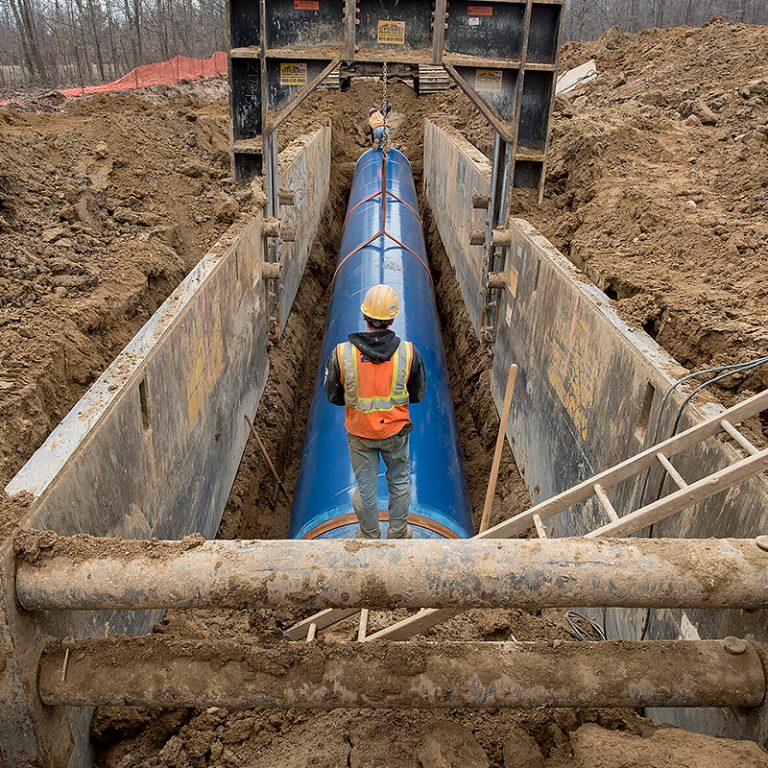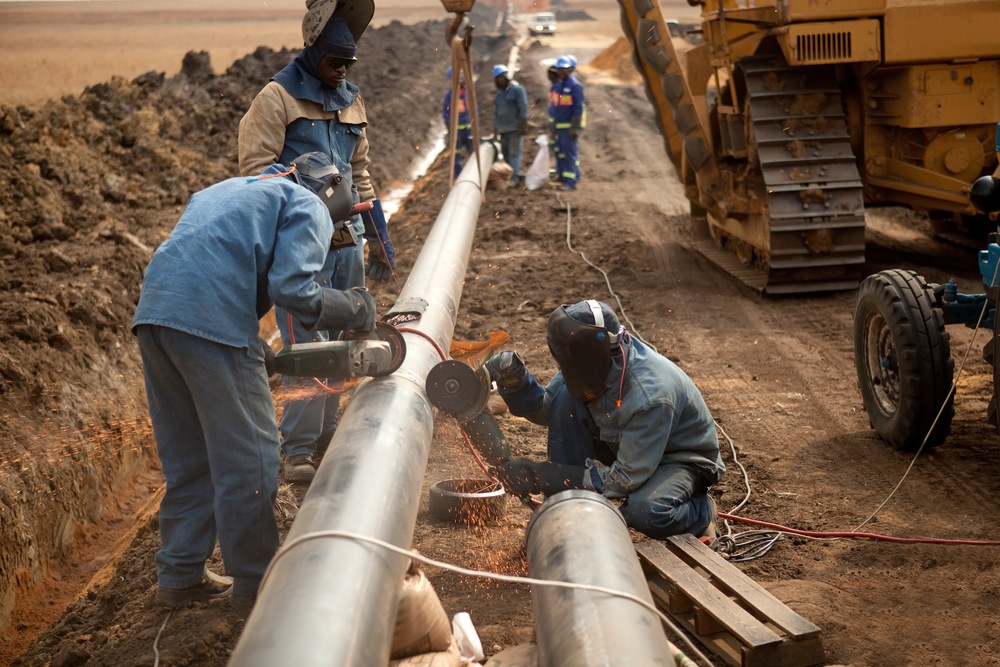The Importance of Long-Term Performance With Creek Pipe HDPE installation
What You Ought To Know Regarding Pipe Trenching Services: A Comprehensive Overview of Available Options
Pipe trenching services are crucial for the installment and upkeep of underground utilities. They entail numerous approaches tailored to details demands and environments. Comprehending these methods is vital for efficient job implementation. Each alternative presents its own collection of benefits and difficulties. As the need for reliable energy monitoring boosts, recognizing what to consider when selecting a trenching solution becomes imperative. What aspects should one prioritize to ensure success?
Comprehending Pipe Trenching: What It Is and Why It Matters
Frequently ignored, pipeline trenching is a vital procedure in numerous building and construction and utility tasks. This technique entails excavating slim trenches to help with the installation of pipelines for water, gas, sewer, and telecommunications. The value of pipe trenching hinges on its function in making sure that these crucial systems are properly integrated into facilities, enabling the safe and effective distribution of necessary services.Proper trenching is vital for preserving the integrity of pipelines and decreasing dangers connected with dirt disintegration and cave-ins. It likewise enables reliable inspections and maintenance of underground energies. Additionally, comprehending the regional policies and environmental factors to consider is vital, as improper trenching can result in costly hold-ups and legal concerns. Eventually, pipe trenching functions as the foundational action that supports different building undertakings, making it a significant facet of modern framework advancement.
Usual Trenching Approaches for Below Ground Energies
In the domain of underground utilities, various trenching approaches play a vital role in setup and maintenance - Creek Pipe Company. The open-cut trenching approach, directional boring technique, and hydro excavation procedure each offer unique advantages relying on the specific project requirements. Comprehending these approaches is necessary for efficient and reliable energy management
Open-Cut Trenching Method
Open-cut trenching is a commonly made use of approach for mounting underground utilities, specifically when the deepness and width of the trench permit for efficient gain access to. This method involves excavating a trench along the proposed path of the energy, providing straight visibility and ease of access for installment. It is especially useful for tasks that need comprehensive excavation, as it helps with quick installment and evaluation. It also demands careful preparation to lessen disturbance to the surrounding location, consisting of traffic and existing structures. Open-cut trenching is most reliable in open areas where the dirt conditions agree with, however it may be limited in metropolitan settings because of the existence of existing utilities and other below ground challenges.
Directional Boring Technique

Hydro Excavation Process
How does hydro excavation stick out amongst typical trenching techniques for underground energies? Hydro excavation uses high-pressure water and vacuum cleaner technology to safely remove soil, enabling for accurate digging around delicate below ground energies. This method minimizes the risk of damaging existing framework contrasted to typical mechanical excavation. By using water to loosen up the dirt, hydro excavation supplies a less intrusive approach, reducing the possibility for dirt compaction and making certain a cleaner worksite. In addition, the process enhances presence throughout excavation, enhancing general precision and performance. Hydro excavation is specifically beneficial in city areas where utility lines are densely packed, making it a preferred selection for service providers concentrated on security and accuracy in below ground jobs.
Advantages of Trenching Providers
While different methods exist for mounting below ground utilities, trenching solutions provide distinctive benefits that make them a recommended option for many tasks. One significant advantage is the cost-effectiveness of trenching, as it normally needs less specialized devices compared to options like hydro excavation. This typically results in lower labor and functional expenses. In addition, trenching can suit a large range of energy types, consisting of water, sewage system, and gas lines, offering adaptability for contractors.Moreover, trenching allows for effective accessibility to multiple lines in a solitary excavation, lessening interruption to the surrounding location. The process likewise makes it possible for exact installment and repair work, which is essential for sticking to regulative standards and making sure long-term dependability. Inevitably, trenching can be executed fairly swiftly, lowering job timelines and enabling faster service remediation. These advantages collectively make trenching solutions a practical option for lots of below ground energy tasks.
Downsides and Obstacles of Trenching
Despite the various advantages of trenching services, there are notable drawbacks and difficulties that need to be taken into consideration. One substantial challenge is the potential for dirt instability, which can lead to cave-ins, posing risks to workers and equipment. Furthermore, trenching can disrupt existing energy lines, demanding mindful preparation and sychronisation to prevent solution disturbances. The process can additionally be taxing, specifically in city locations where room is limited and access is limited. Trenching might call for considerable authorizations and regulative compliance, adding complexity and possible hold-ups to projects. Ecological worries, such as soil disintegration and damages to neighborhood environments, can emerge from inappropriate trenching methods. Lastly, the costs connected with trenching, including labor and devices, can escalate if unanticipated issues arise throughout the project, making it vital for stakeholders to evaluate these obstacles versus the benefits when considering trenching solutions.
Trick Variables to Think About When Selecting a Trenching Service
Selecting the best trenching solution can substantially affect the success of a job. Several vital variables ought to be examined to ensure an appropriate choice. The firm's experience and expertise in trenching procedures are important; a reputable service with a solid track document is normally much more reputable. Next, assessing the tools utilized is basic, as modern equipment can improve effectiveness and precision. In addition, it is significant to think about the array of solutions offered, consisting of excavation deepness and soil type handling, to confirm they satisfy specific task requirements.Another element to review is the firm's online reputation; customer reviews and testimonials can offer insights right into previous efficiency. Obtaining detailed quotes that detail expenses and timelines will certainly help in budget plan management. Ultimately, verifying compliance with local regulations and market requirements is critical for preventing prospective legal concerns. By assessing these aspects, clients can make a notified choice when choosing a trenching service.
Safety And Security Measures in Pipe Trenching
In pipeline trenching, security procedures are crucial to making sure worker protection and website integrity. Trick components consist of making use of personal safety equipment, extensive excavation site inspections, and distinct emergency feedback procedures. Implementing these actions significantly lowers dangers related to trenching procedures.
Personal Safety Equipment
Safety and security in pipe trenching greatly relies on the appropriate usage of personal protective devices (PPE) Employees ought to put on hard hats to shield against falling things, in addition to high-visibility vests to boost their visibility on-site. Steel-toed boots are crucial for foot protection against hefty equipment and materials. In addition, handwear covers are essential for hand safety and security, especially when taking care of rough or sharp things. Respirators might additionally be required in atmospheres with dust or unsafe fumes. Eye protection, such as security goggles, must be put on to protect against debris. Hearing security is necessary in loud work atmospheres. By sticking to PPE standards, employees can considerably lower the threat of injury and ensure a safer trenching procedure.
Excavation Website Evaluation
Appropriately evaluating the excavation site is a fundamental action in guaranteeing a safe pipe trenching operation. This process involves examining the website for prospective dangers such as below ground energies, unpredictable dirt problems, and close-by structures. A detailed assessment permits the identification of risks that could endanger employee safety. In addition, confirming the dirt kind and moisture degrees can assist establish suitable shoring approaches to stop trench collapses. It is important to guarantee that the website find this is free from debris and that correct signage is presented to inform workers of recurring procedures. Regular assessments throughout the job can additionally help discover any type of changes in website problems, allowing timely changes to precaution and job procedures.

Emergency Situation Reaction Protocols
Emergency situation reaction methods are important in mitigating risks connected with pipeline trenching operations. These procedures guarantee that all workers are prepared to act quickly and effectively in emergencies. Crucial element consist of regular safety and security drills, clear communication networks, and designated fire escape. In addition, first-aid kits and emergency situation contact numbers need to be readily obtainable on-site. Trenching operations need to additionally include procedures for taking care of hazardous situations, such as collapses or utility strikes. Training employees on identifying potential dangers and comprehending their functions throughout an emergency situation is vital. Maintaining an updated site security plan can significantly improve action effectiveness. Generally, reliable emergency situation readiness promotes a much safer working atmosphere and lessens the impact of unforeseen occurrences.
Price Factors To Consider for Trenching Services
Understanding the financial implications of trenching solutions is important for task planning and budgeting. The prices related to trenching can differ extensively based upon numerous aspects, consisting of task size, soil kind, and depth of the trench. Labor prices frequently represent a substantial section of the overall expense, as competent operators are essential for reliable execution. Additionally, tools rental costs can contribute to the overall spending plan, particularly for specialized machinery.Site availability is one more essential factor; difficult terrain might demand added resources, raising expenses. Permitting and governing conformity can likewise include in costs, particularly in city areas where laws are stringent.Lastly, unanticipated issues, such as experiencing existing energies, can result in unanticipated costs and hold-ups. Therefore, getting in-depth estimates from reliable trenching provider is go now important for precise budgeting and making certain successful task see it here completion.
Often Asked Inquiries
The length of time Does a Normal Pipe Trenching Job Take?
The period of a common pipe trenching task differs considerably based on variables such as deepness, dirt problems, and project intricacy. Usually, it can take anywhere from a few days to a number of weeks to complete.
What Equipment Is Typically Utilized in Pipe Trenching?

Are There Environmental Laws for Trenching Activities?
Ecological regulations for trenching tasks frequently need compliance with neighborhood, state, and government guidelines. These regulations aim to decrease environmental disturbance, shield water sources, and warranty proper waste administration during excavation and installation processes.
Can Trenching Services Be Incorporated With Various Other Building And Construction Tasks?
Trenching services can certainly be integrated with various construction projects. By coordinating initiatives, performances can be accomplished, decreasing disturbances while making sure that all needed infrastructure job is finished in a prompt and cost-efficient fashion.
What Prevail Dirt Keys In Experienced in Trenching?
Common soil types experienced in trenching include clay, sand, silt, and loam. Each type presents one-of-a-kind challenges, affecting excavation techniques and stability, necessitating cautious preparation to ensure safe and reliable trenching operations.